The concept of traditional shopping has evolved into digital shopping. We used to physically window-shop products from multiple vendors, and now we window-shop by scrolling through multivendor E-commerce marketplace websites. Flipkart, Amazon, and eBay are a few of the multivendor websites to mention who is doing extensively well in terms of digital contribution and building a revolutionary business. And in the run to build a revolutionary business, entrepreneurs want to build their own multivendor marketplace with new innovations. If you are from one of them, this Mega Guide is for you.
Let us start by understanding Multi-Vendor E-commerce Marketplace development in detail.
Table of Contents
What is a multi-vendor eCommerce marketplace?
We must understand Single Vendor stores before understanding Multi-Vendor E-commerce Marketplaces.
For a Single Vendor e-commerce marketplace, think of it as a specific store. For example, if you want to buy a smartphone, you might go on the Samsung official website and buy the selected products. Or if you look at other vendors, you have to switch the website and reach another vendor. In short, Single vendor e-commerce platforms are stand-alone stores selling products to multiple customers with a limited niche and product range.
For a Multi-Vendor E-commerce marketplace, think of it as a shopping mall where multiple vendors open their shops give. Once the customers enter the mall, they have a wide option to choose from multiple vendors and multiple niches. Similarly, we enter into a multi-eCommerce marketplace and have a number of vendors selling the same or different products. You don’t have to leave the marketplace if you want to search for different vendors or product categories. In short, it is an all-in-one marketplace.
Stats in the eCommerce market
Before moving to how a multi-vendor marketplace works, check out these stats in the E-commerce industry.
- E-commerce retail sales noted $ 4.9 Trillion US dollars. In the next 4 years, it will grow by 50%.
- M-Commerce registered retail sales of $3.5 Trillion in 2021.
- Electronics and fashion items are registering more sales among users, with $988 Billion and $904.5 Billion, respectively.
How does a multi-vendor marketplace work?
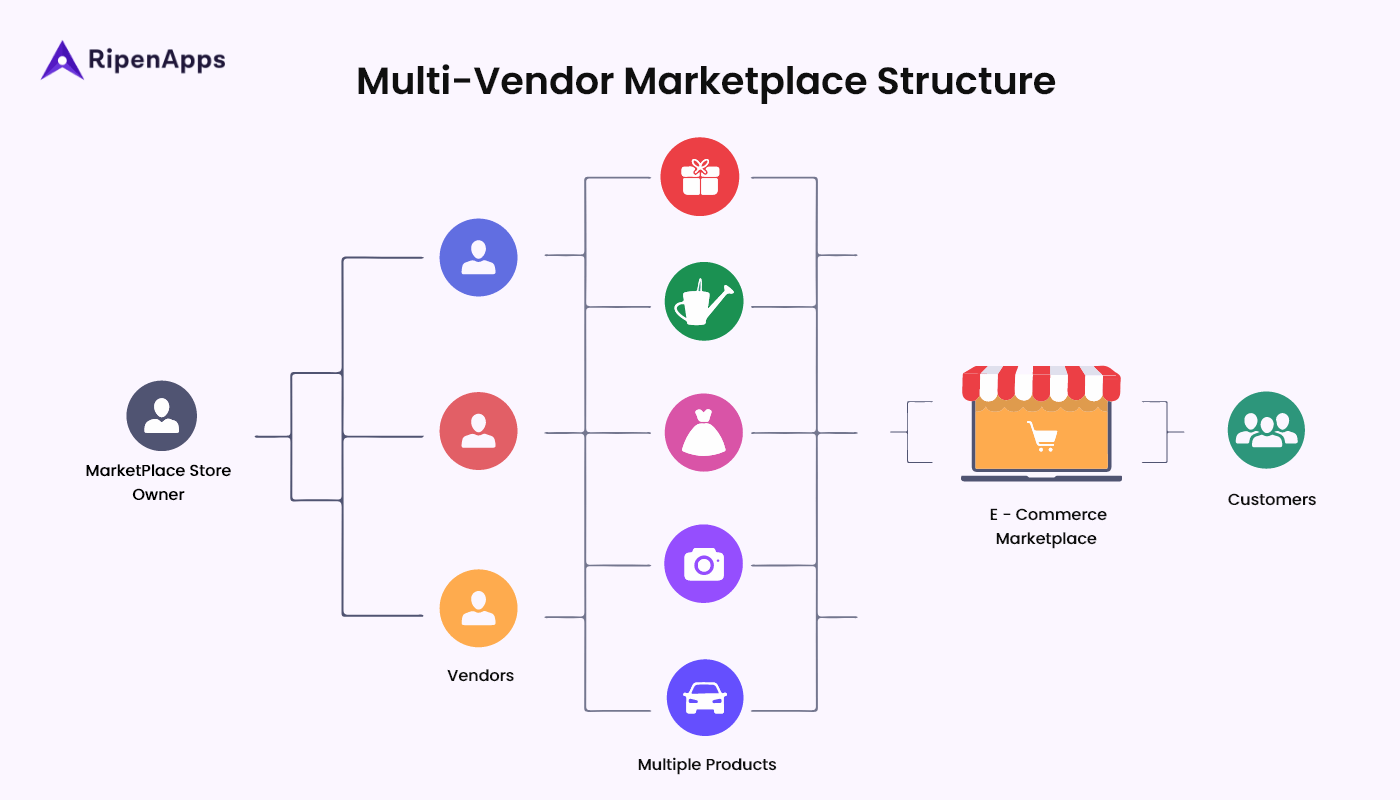
Multi-Seller eCommerce platforms work on a similar model. All of them have three entities, marketplace owner, vendors, and customers. Marketplace owners basically work as a mediator between customers and vendors. Think of Marketplace owners as a mall where multiple vendors sign up and establish their stores. The same is for users.
How does the multivendor model work for customers?
- Customers register on multivendor eCommerce websites. It acts as a permit to buy and sell items.
- Customer search in the universal bar for products offered by multiple vendors at different prices.
- The site has a buy option or adds to card option to let customers check out their products by filling address and payment details.
How do multivendor work for vendors?
- The vendor registers with the E-commerce marketplace.
- A dashboard to manage their listings or add new ones.
- All the order demands are present in the dashboard.
- Money and invoice management tab.
The above-mentioned pointers explaining how multi-Vendor eCommerce Marketplace works are common in the majority of the marketplaces.
Types of multi-vendor eCommerce marketplace
There are three main types of Multi-Vendor E-commerce marketplaces that you can build.
- Business to Business: These marketplaces are for businesses. Multiple businesses buy and sell products. A key difference from business to business is that both entities have their own end users. So, none of them are end users to will actually use the product. Generally, businesses use B-to-B platforms to buy products that will act as raw materials or assets to build products for their end customers.
- Business to Consumer: Here, businesses and customers come on the portal to sell and buy products, respectively. Customers are the end users who will actually use their products.
- Consumer to Consumer: These marketplaces are meant to benefit customers. The items sold here are used products. Consumers who want to buy products at cheaper rates and are fine with second-hand products register on these sites.
Types of business models in the multi-vendor eCommerce marketplace
Further, we can also mention types of multi E-commerce marketplaces
- Vertical Marketplace: These marketplaces are designed for specific niches. For example, there can be a clothing store or a gadget store. Although multi vendors are available in these stores, the category of the products is limited
- Horizontal: This is a diverse type of business model for the marketplace. The products belong to multiple niches, and you can mostly find all the products here, ranging from groceries to fashion and gadgets, just like Amazon.
- Global Marketplaces: Some of the marketplaces only work in their regions and are limited to a specific country. But some models follow a global approach where they ship products internationally.
Read Also: Marketplace App Development is the Need of Modern Businesses:
Benefits of multi-vendor marketplace apps
It is not fixed that every ecommerce app development project brings benefits to a business. However, by shortlisting the right eCommerce app development company, you can unlock the benefits. Here are the benefits that you unlock once your application is successfull.
Lower Financial Burden
Businesses that want to sell their products online have to build a website. Building a website is itself a complex process performed by a web development company. Similarly, the process further increases the complexities if you want to build your app. But, when vendors register with an established website, they decrease the financial burden. They do not have to invest in these complex steps and can directly start the business.
Platform to Quality Product/Service Providers
Security is a major part of every marketplace. Your business will provide trustworthiness to the vendors and end customers. For example, on amazon, vendors do not have to worry about fraudulent buyers because they have to pay for their products. Similarly, customers can feel secure about the vendors since they have already complied with the terms and conditions of marketplaces.
Multi-Vendor Inventory Management
For vendors, a marketplace provides robust inventory management service right from anywhere. How many orders are pending? How many orders are successfully delivered? And what is the current inventory number? All these complex management questions are answered right in the dashboard of multi-vendor inventory management.
A Vast Display of Products and Services
In the traditional shopping model, vendors had to buy huge spaces to display multiple products. But, with a marketplace, you can revolutionize the method of display. Vendors can display a wide range of categories to customers without any kind of space requirement, like in traditional shopping.
Better Customer Service
If you have shopped using an online E-commerce store, you must be aware of the 24×7 customer service. Since everything is performed through a computer, you can offer brilliant customer service to the vendors and the customers, further improving the overall shopping experience of the users. There is no competition for online customer service. Now, customer service through chats is another major advantage gained through online marketplaces.
A Wide Customer Base
Through Multi vendor’s E-commerce marketplace, the scope of the customer base is as big as possible. For example, a customer buying a smartphone will probably need a smartphone case and tempered glass. For that, they will approach other vendors. So, customers come from a wide range of possibilities.
Challenges of running an online marketplace
With the amazing benefits, there come some challenges in E-commerce platforms. Here are the most commonly known challenges.
Wrong Tech Stack
While building a multivendor marketplace, you have to choose a tech stack. Whether you hire an e-commerce development company or hire in-house developers, you still have to understand some information about the tech stack. Do not rush things and end up choosing an incomplete and cheap tech stack.
Balancing the Focus on Buyers and Sellers
Every business needs to attract customers. For a multivendor e-commerce marketplace, it is a vital element. Marketplaces offer discounts and coupons to buyers and sellers to attract them to list products on their sites. But it also becomes tough to maintain a balance of budget for both entities.
Requires High-Quality SEO
A poor promotion might end up in a loss for your business. You have to hire a dedicated marketing team for the SEO of your website. Similarly, you have to hire a social media team to market on social platforms.
Maintaining the User Experience
User experience is another key component in websites, and an E-commerce website has to have a great user experience. For every bug, websites have to go through maintenance, and it is crucial that they maintain the current user experience, and updates must amplify it to the other. But more new features sometimes affect other features, so it is tough to maintain an appealing and smooth user experience all the time.
Building the multi-vendor E-commerce app
While building the app, you have to focus on certain elements that we are going to list below:
- Research your target audience: You cannot sell the same product to every demographics. For example, if a business is running in the USA and South Africa, they have to research its target audience, offer the products according to them and set the prices.
- Design your product: Here, you can first start by building the MVP of your product before heading towards development. Define the looks, feel, and features of your product in advance.
- Choose the correct tech stack: Choosing the right tech stack saves time and resources for your app. Once you finalize your tech stack, you can head up straight into the development process.
- Developing the app: Here, you can hire an in-house team or an app development company to build your product. Ensure that you stay connected to them and monitor your project regularly.
- Launching the app: For launching, you have to hire a marketing team. Some app development companies offer marketing services too. So, choose according to your budget and requirements.
- Maintenance and support: Support is a key service that you have to provide in your E-commerce platform. Further, keep your app maintained so it stays flawless and smooth and introduces trending features.
Must have features for multi-vendor eCommerce marketplace
Every Multi-vendor E-commerce marketplace must have integrated a few universal features to power up your new eCommerce marketplace to stand strong in the competition. Here are the features:
Product Management
Since there would be multiple vendors selling their products, and for efficient operations, they need a smart product management system. From uploading pictures to checking the inventory, you have to give everything to the sellers in their dashboard.
Order Management
The customer base is huge for vendors, and to manage that, they need efficient order management. From tracking the shipping to managing invoices, you have to deliver all the necessary order management features. The same goes for the customers.
Vendor Profile Dashboard
Vendors might step into multiple product niches. Let them manage different profiles smoothly without any flaws.
Customer Management System
For customers, a marketplace must offer a smooth billing process. Further, let customers check their order history and other important details with efficiency.
Payment Management
Since your website will have customers from multiple locations, you have to offer multiple options to the users. Further, the integration of payment gateways should be efficient in processing 99% of the transactions without any issues.
Steps to Create a Multi-Vendor Marketplace?
When we come to actually lay the blueprints and build the marketplace app, we refer to the core part of the idea. It is where an idea evolves to perfection and to the final product. Here are the steps to create a multi-vendor e-commerce marketplace.
Extensive Market Research
You got an idea to build the marketplace app. Now what? Now you have to work on the idea and polish it through extensive market research. Analyze the targeted audience and the competitors to understand how strong your idea will stand in the competition. Research how you can bring unique things and solve problems for the users.
Choosing from the available eCommerce platform and tech stack
The choice of the right tech stack is a crucial point for every product. The Tech stack includes the bundle of technologies you are going to use for the front end, back end, and database. Further, you can also opt for modern CMS technologies like Magento, Shopify, WooCommerce, and more. So, research the pros and cons of the available and widely used technologies.
Building the Marketplace App
Whether you have hired an app development company or freelance developers, you have to keep in touch with your development partners. Keep taking regular meetings and know what is the status of your project all the time. From security to flawless shopping, you have to think like a customer to test all the features integrated into your multi-Vendor e-commerce marketplace app.
Maintenance and Marketing
Once your product is live, plan your marketing strategy for your marketplace. You cannot attract buyers and sellers to your platform without proper and extensive plans. Further, keep updating bugs and useful features regularly.
Monetization methods for multi-vendor eCommerce marketplace
Now that you have enough information about the development of your marketplace app, you must be wondering about the monetization methods. We have covered that too for you.
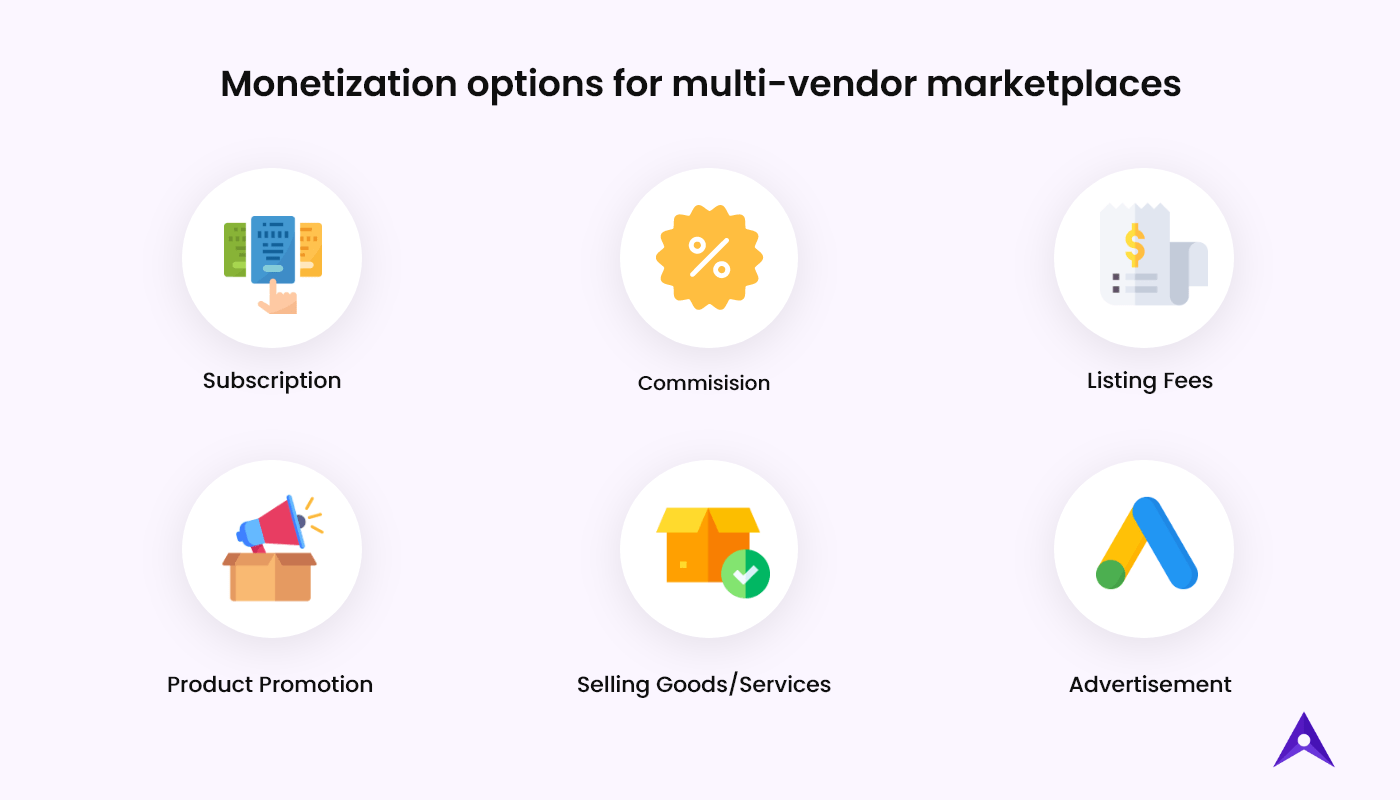
- Listing Fees: Sellers get an established platform in advance when they list their products on your marketplace. You can charge a small fee from sellers for listing their pages.
- Advertising: You can opt for third-party advertisement banners on your website to make extra income.
- Commission Fees: For every purchase, you can charge a small commission fee from the sellers.
- Subscriptions: These are some special features that you can offer to the sellers. Like competitive pricing plans and predictions.
- Feature Listings: Since there will be so many sellers, you can further feature a few of the top sellers in return for a fee.
Deciding Technology Stack
Covering the technology stack there are a few common tech stacks that you can use to build your Multi-Vendor Market place.
- Front-End: Front end is the face of your marketplace app. HTML, CSS, JavaScript, AngularJS, and ReactJS are a few of the common front-end technologies to build appealing apps.
- Backend: It integrates the working behind the front face. You can use PHP, MySQL, and Python to implement the backend of the app integrating the right server and database management system.
Technologies for multivendor eCommerce marketplace development
There are few technologies specifically popular for E-commerce app development. You can choose any of the below since all of them are efficient in getting the work done.
- WooCommerce: With the WooCommerce plugin, you can transform your WordPress website into an E-commerce store. It adds all the E-commerce functionalities. It is one of the best plugins for a single vendor store.
- Shopify: Shopify, an e-commerce platform for buying and selling, allows an E-commerce building platform. Shopify can be your best pick to scale your business for a multi-vendor E-commerce platform.
- Magento: Magento is another solid multi-channel E-commerce building platform. It is highly efficient for B2B and B2C customers, bringing everything on a single platform. The software is built by Adobe, delivering a seamless experience.
Cost of building a multi-vendor eCommerce marketplace
The cost of building a Mult-Vendor E-commerce marketplace platform can never have a fixed number. The whole development process varies from service provider to service provider. You must consult the mobile and web app development companies for the quotation.
FAQs
Q1. What is a multi-vendor E-commerce marketplace?
Multi-Vendor E-commerce brings multiple vendors from different niches under one single platform. Customers can buy anything from any vendor they want.
Q2. How to build a multi-vendor marketplace?
First, you have to start by defining the product niches that your E-commerce app will have. Next, determine all the features and functionalities, and business models. Then, decide what revenue methods you would choose. Finally, build your app and publish it.
Q3. Is Shopify good enough for multi-vendor E-commerce development?
Undoubtedly, Shopify is one of the leading eCommerce development platforms, and you can flawlessly create a top-notch E-commerce website with an appealing user interface and experience.
Q4. What is the cost of multi-vendor E-commerce development?
It is impossible to define the cost of a Multi-Vendor Ecommerce Marketplace Development with a fixed number. Your features and functionalities will define the cost of your project, so it’s a good idea to discuss it with your app development company.


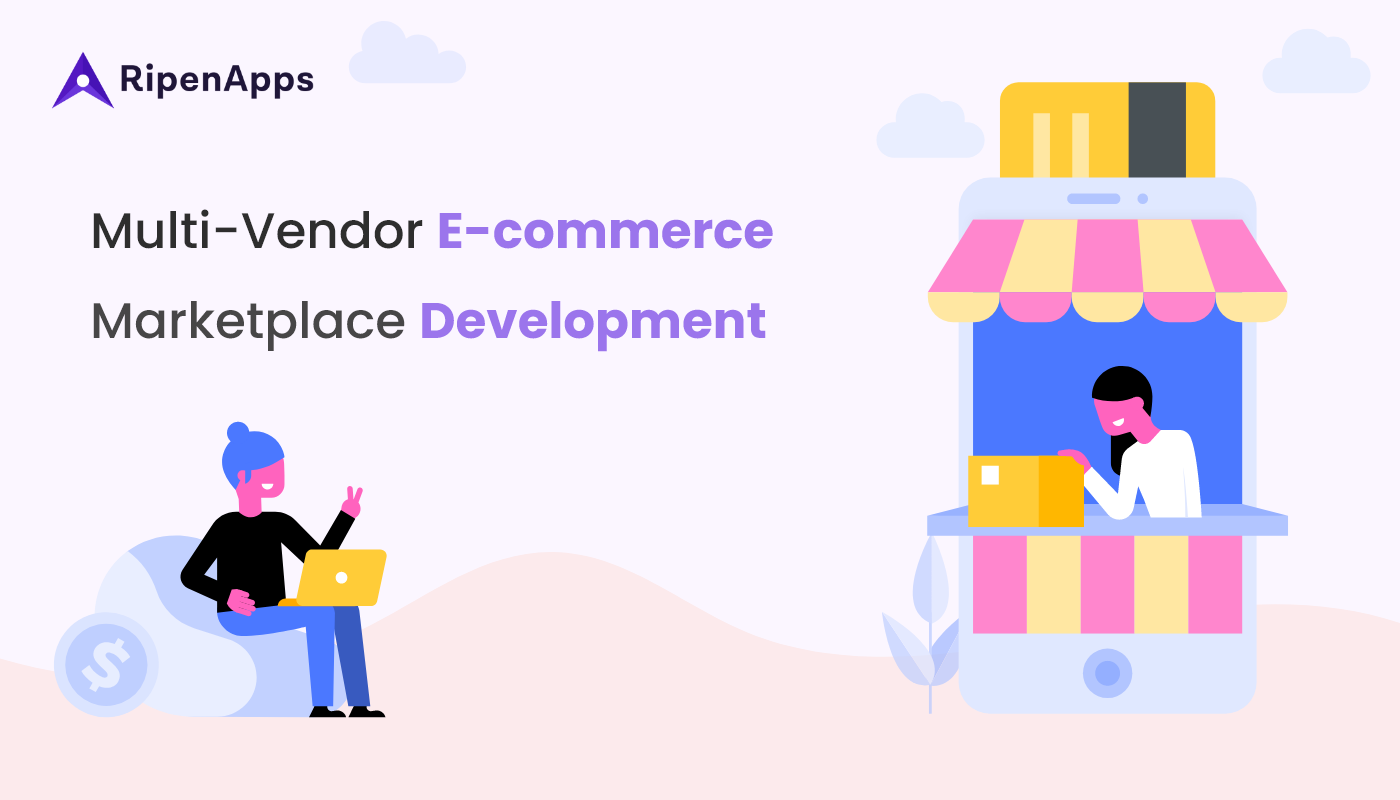



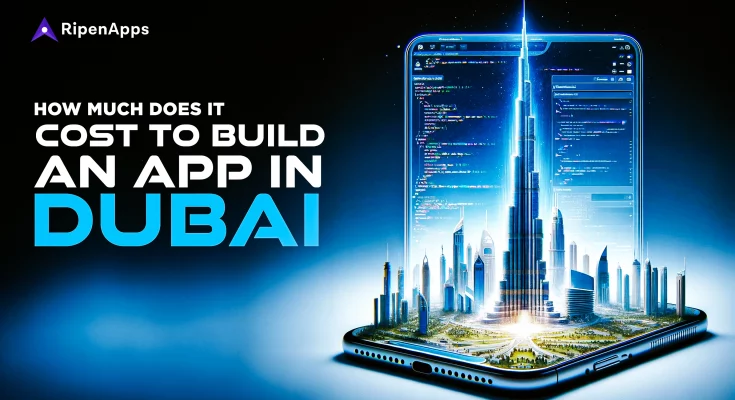

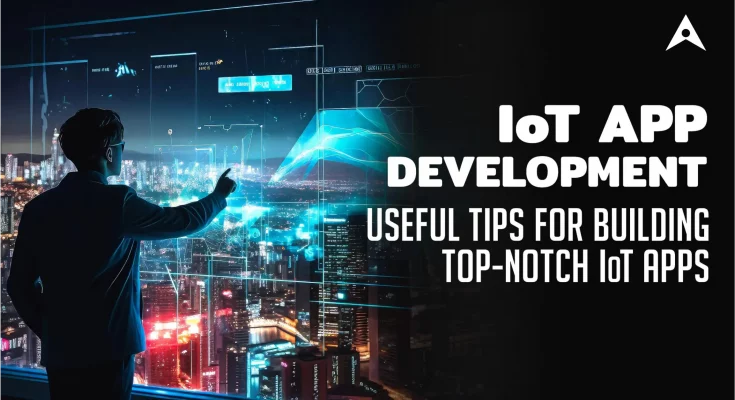

 India
India USA
USA Australia
Australia Canada
Canada UK
UK UAE
UAE